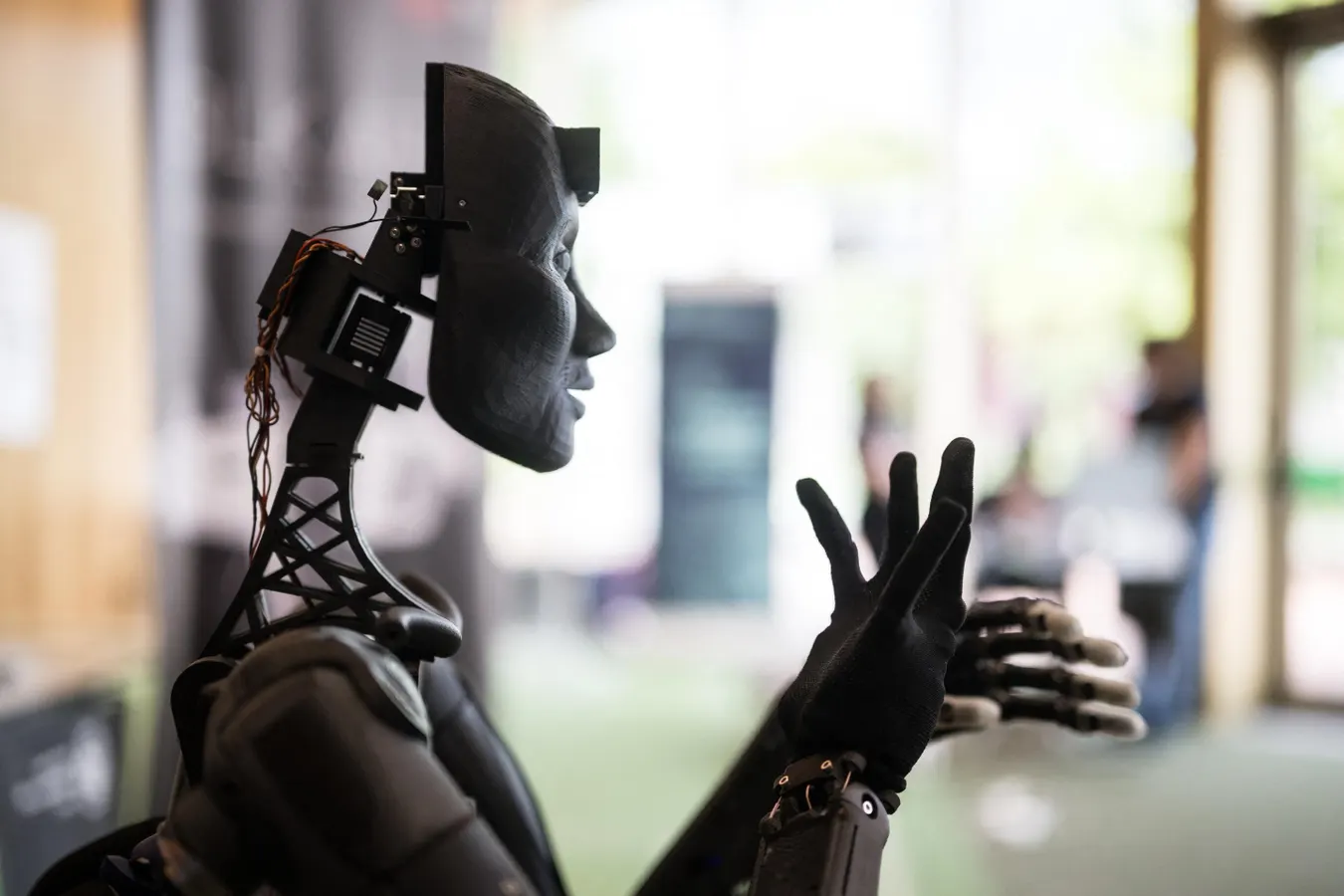By Contributor Fabrice Coffrini Jim Euchner
TOPSHOT – A robot using artificial intelligence is displayed at a stand during the International … More Telecommunication Union (ITU) AI for Good Global Summit in Geneva, on May 30, 2024. Humanity is in a race against time to harness the colossal emerging power of artificial intelligence for the good of all, while averting dire risks, a top UN official said. (Photo by Fabrice COFFRINI / AFP) (Photo by FABRICE COFFRINI/AFP via Getty Images)
AFP via Getty Images
A mantra in press releases about generative AI in corporations has been that it will ‘free up people to do more creative work.’ Satya Nadella, Microsoft CEO, claimed that “AI will do our drudge work, freeing us to do the creative tasks where humans excel.” But Microsoft also announced cuts of 6,000 jobs in May, partly attributed to AI automation. Andy Jassy, Amazon’s CEO, stated that “Agents will allow us to start almost everything from a more advanced starting point… focus less on rote work and more on thinking strategically about improving customer experiences and inventing new ones.” Amazon has announced 27,000 layoffs since 2022, for some of which AI efficiencies were explicitly cited. Similar patterns exist for other tech firms, including Meta and Duolingo.
What’s going on? Is this just a mismatch between PR and the efficiency imperative? Is there any evidence that the jobs are being redesigned for increased creative content, or are we experiencing a straightforward substitution of people for AIs? Perhaps is neither of these, but rather that contradictory messages are natural as executives naviate the fog of transition to a radically new technology.
AI certainly has the potential to free people to spend more time on creative tasks. It can create slack time for learning, innovation, or deep thinking about a design. It can also be used to create jobs with broader accountability or a richer work environment. But if any of these is happening, it isn’t being discussed.
That is too bad. Businesses could be missing an opportunity, one that goes beyond task automation to rethinking the design of work and technology. They may be missing the chance to take true advantage of the expanding capabilities of generative AI. A narrow focus on efficiency can shift attention away from other important metrics, like customer satisfaction and employee engagement.
The irony is that an efficiency mindset might not even maximize efficiency, at least in the long run. In an interview, Patricia Sachs, a workplace anthropologist, told me that “automation mechanizes the way things are supposed to happen. But they almost never happen as expected.” The reason is that much work in the real world is invisible, involving workarounds, improvisations, and social networks. As Sachs noted, “none of these appear in the workflow diagram or org chart.”
MORE FOR YOU
This was true at Klarna, a leader in the deployment of generative AI. The company has claimed that AI handles about two-thirds of customer service chats, equivalent to the work of over 700 agents. Their initial results showed, in addition, a drop in resolution times and reduced repeat inquiries, all while maintaining customer satisfaction.
But Klarna has started to recruit human agents again, acknowledging that automation led to declines in service quality, customer satisfaction, and trust. CEO Sebastian Siemiatkowski acknowledged that “cost unfortunately seems to have been a too predominant evaluation factor” in the AI initiative, which led to reductions in quality, morale and trust. The company is now hiring human agents and seeking a more productive blend of AI efficiency and human empathy.
Others are reaching similar conclusions. Ravin Jesuthasan, a senior partner at Mercer, cites lessons he learned from a large-scale case study of AI implementation at a financial services firm. The results were impressive, including a reduction in the work of the current staff by 50% and an 18% reduction in employee turnover. In the article, “Want AI-Driven Productivity? Redesign Work,” he argues the key to lasting AI success is to start with the work, not the technology.
These early experiences emphasize the importance of a focus the messy, human, frequently-changing work that is at the center of any good AI application. Starting with the technology risks missing something important that can erode financial benefits.
So what should executives do?
Ask questions that assure that AI developers start with the work, not the technology. Sachs suggests revisiting work design principles that go back to the sociotechnical systems movement: define whole jobs, provide autonomy to workers, engage users in the design of work.
Insist that the supporting technology be designed to support the person doing the job, not the other way around. Ask questions about the job that will be done, not just the technology or efficiency projections.
Go slow to go fast: moving to scale without a clear understanding of system effects can cause problems that are hard to unwind.
Success is more about mindset and taking an holistic approach than it is about technology. Moving beyond a narrow focus on efficiency will lead to more durable and customer-friendly technology and more productive workplaces.
Editorial StandardsReprints & Permissions
